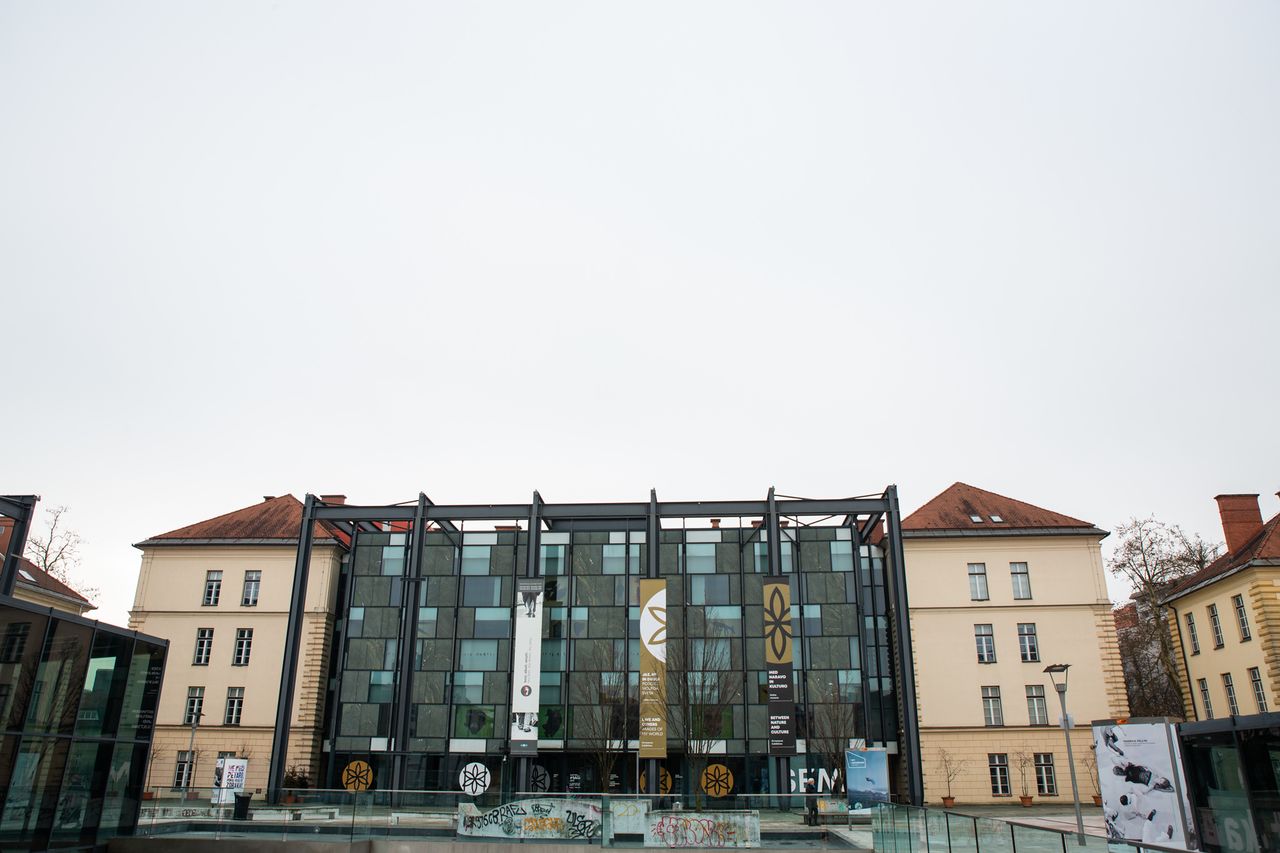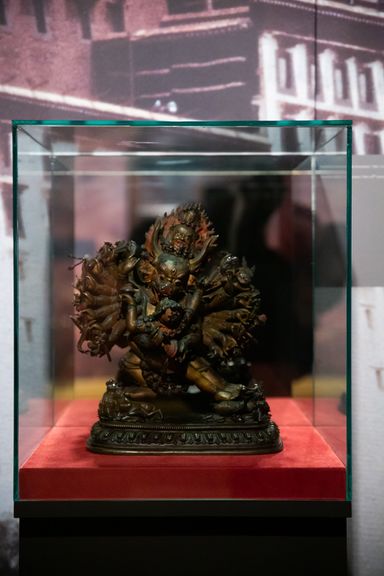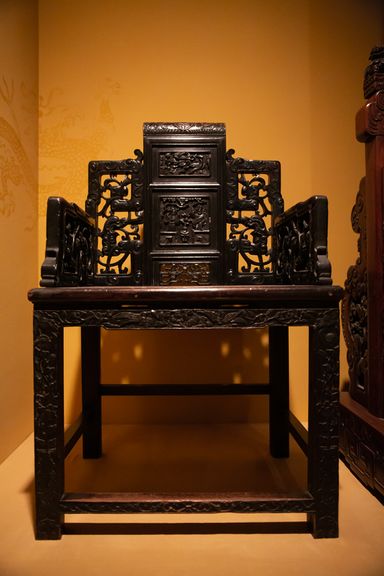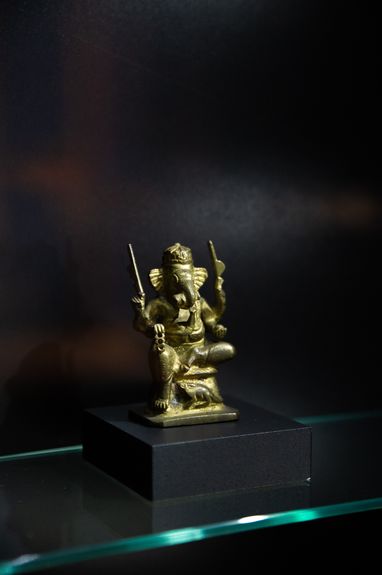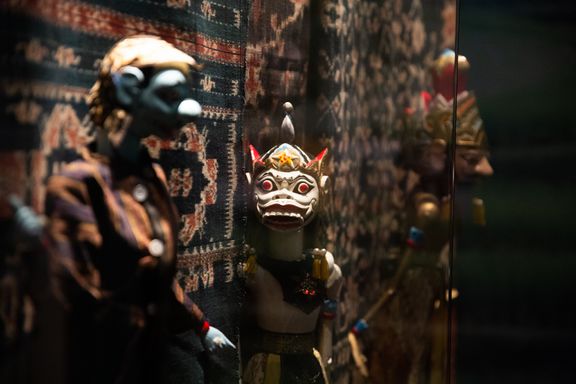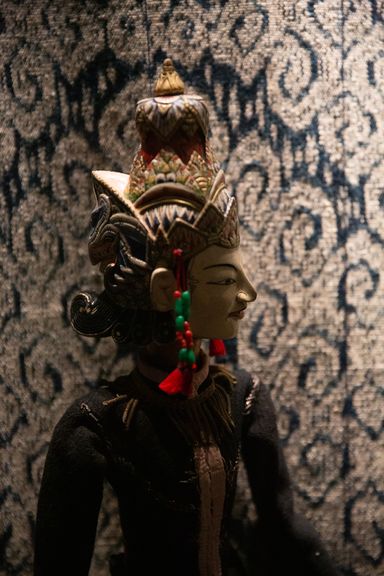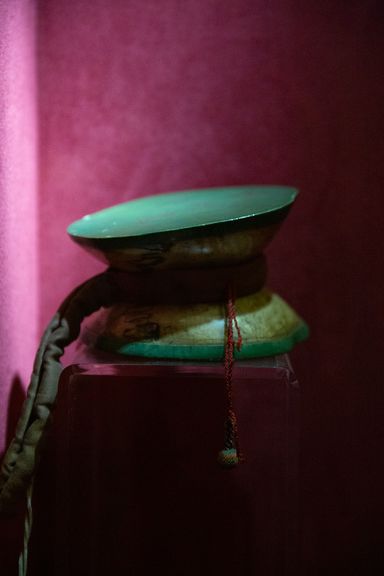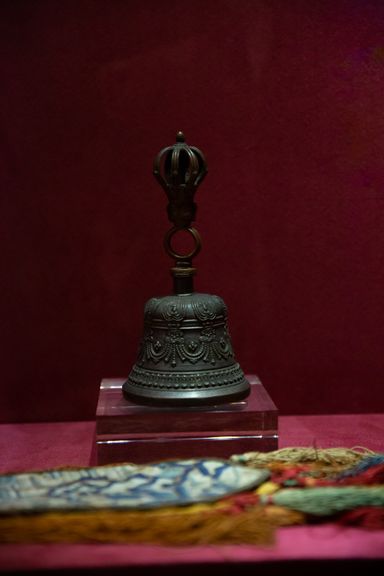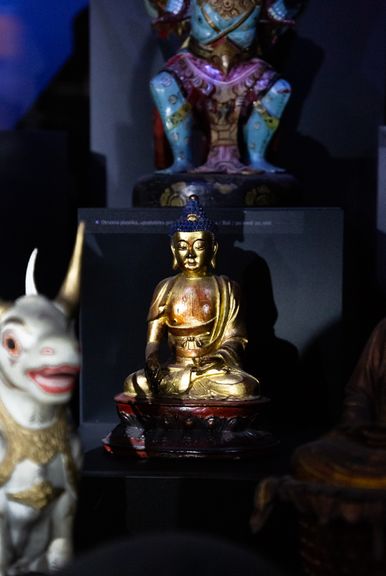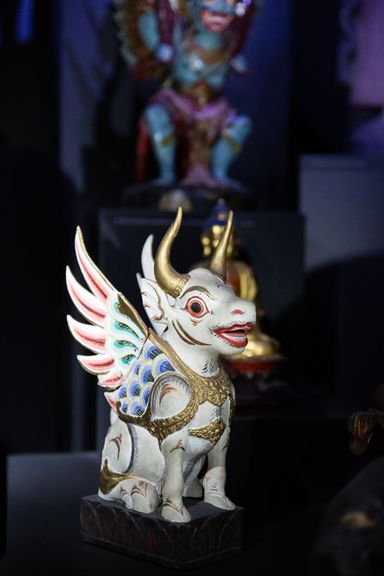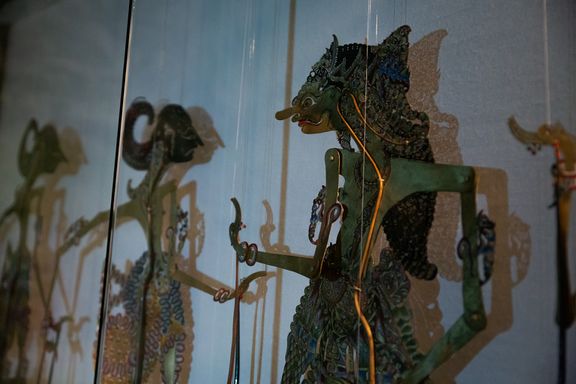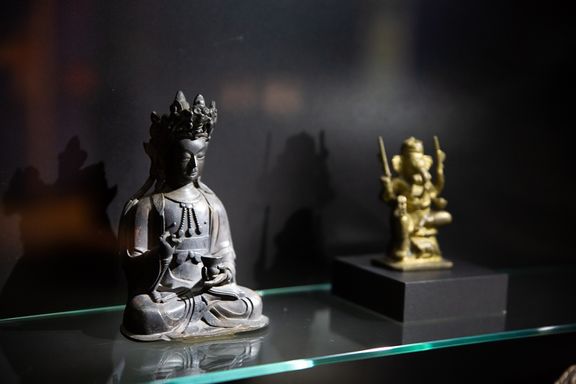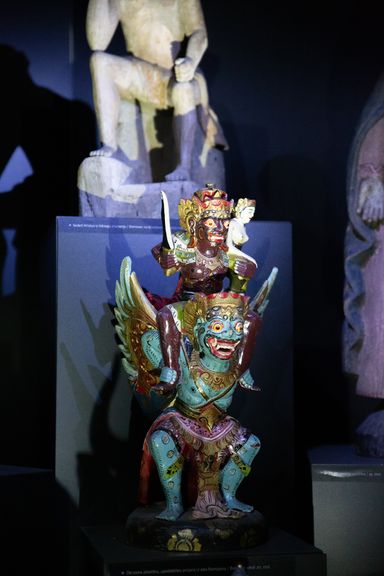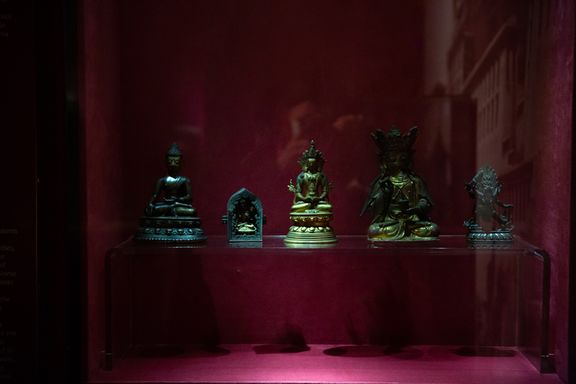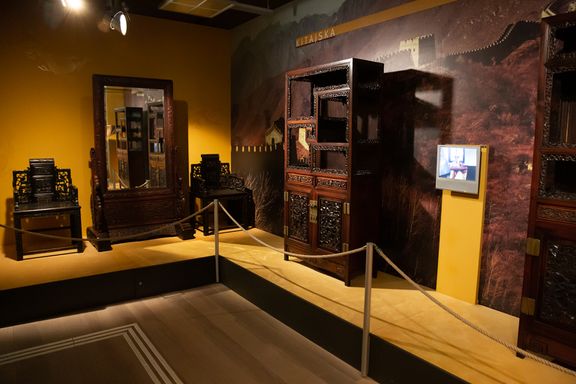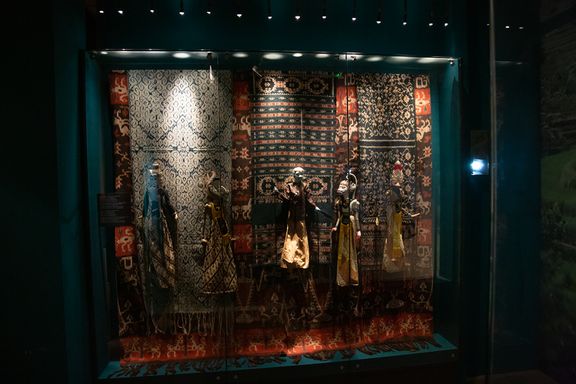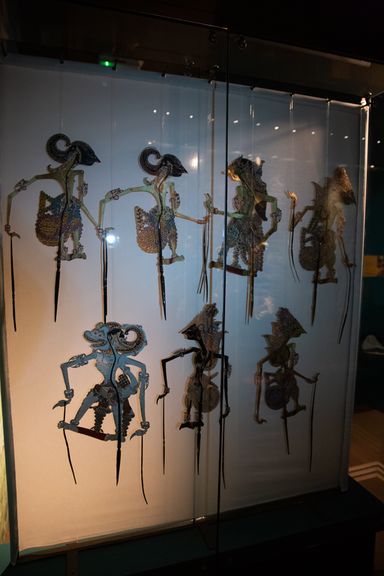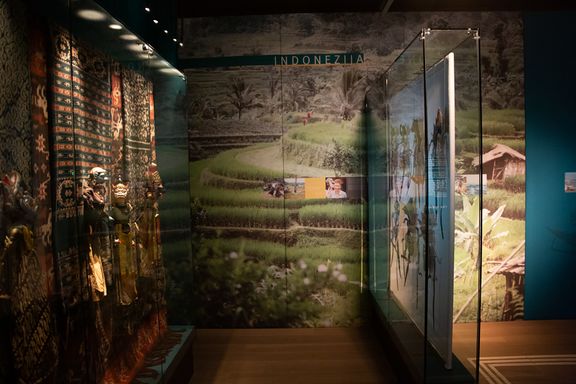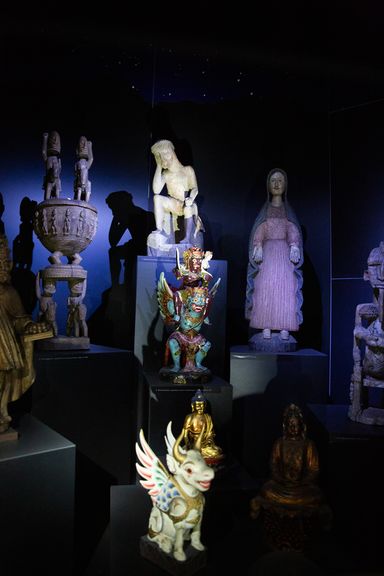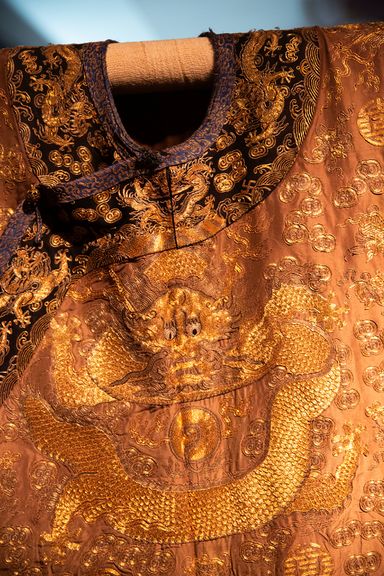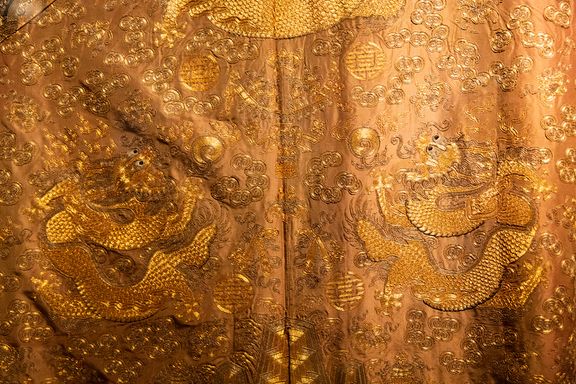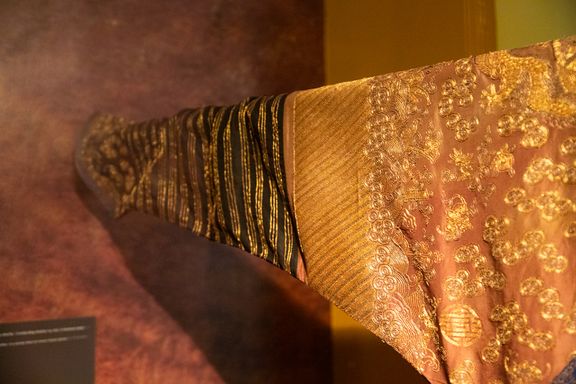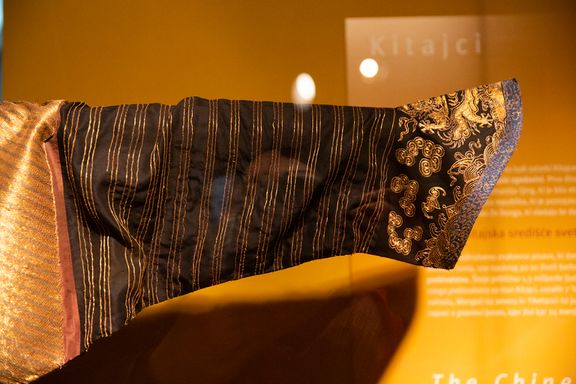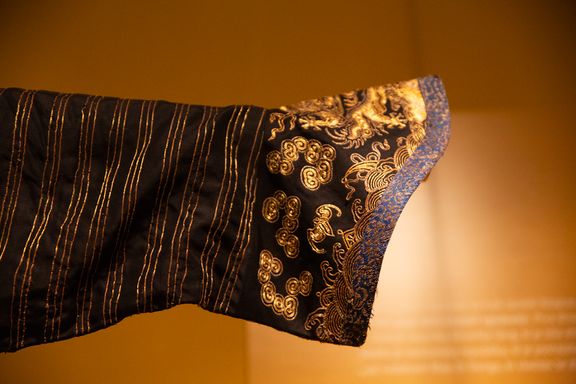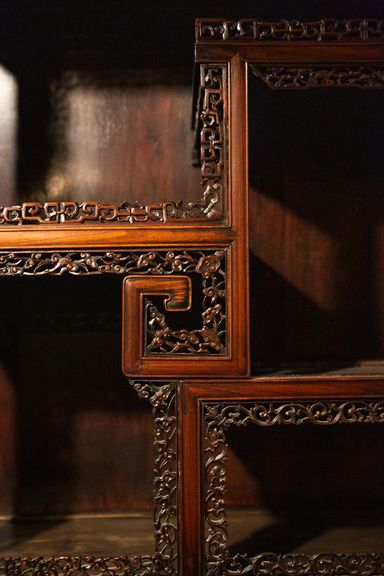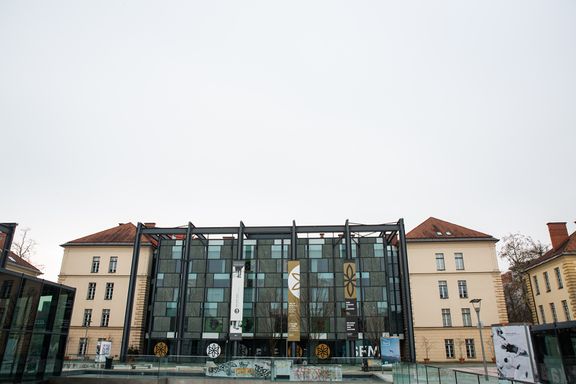-
to
27 Nov 2023
10 Dec 2023
Exhibition "Intangible Cultural Heritage of Slovenia in the Light of Unesco Convention", prepared by custodians Nena Židov and Anja Jerin of Slovene Ethnographic Museum. Co-organised by Embassy of the Republic of Slovenia Buenos Aires.
-
to
15 Sep 2023
23 Nov 2023
Exhibition "Alma Maksimilijana Karlin - Authoress", showcasing the writer's life and work. In the scope of Slovenia – Guest of Honour Country at the Frankfurt Book Fair 2023 and made possible by Municipality of Celje, Slovenian Book Agency, Celje Regional Museum, Celje Museum of Recent History and Slovene Ethnographic Museum.
at the Frankfurt Book Fair
-
to
13 Jun 2023
14 Apr 2024
Exhibition Buzzing Slovenia: of Bees and People, held as part of the 19th European Culture Days, showcasing the traditions of Slovenian beekeeping and innovations in the fields of urban beekeeping and sustainable design. Co-organised by the SKICA Berlin, Embassy of the Republic of Slovenia Berlin, Slovene Ethnographic Museum and Radovljica Apiculture Museum.
-
to
13 Jun 2023
13 Jun 2023
Opening of the 2023 Slovenian Cultural Days in the framework of the 19th European Culture Days with the concert by Mirna Bogdanović, an awarded Bosnia-Slovenian jazz singer, and presentation of Slovenia by the Slovenian Tourist Board. Co-organised by the SKICA Berlin, Embassy of the Republic of Slovenia Berlin, Slovene Ethnographic Museum and Radovljica Apiculture Museum.
-
to
1 Oct 2020
31 Oct 2020
An exhibition Sea – our life presenting fisherman's ethnographic heritage of Caharija Babčič family, curated by Polona Sketelj, Slovene Ethnographic Museum
-
to
17 Jan 2020
31 Jan 2020
The exhibition Intangible Cultural Heritage in Slovenia in the Light of the UNESCO Convention, curated by Nena Židov and Anja Jerin (Slovene Ethnographic Museum), supported by the Embassy of the Republic of Slovenia Skopje,
-
to
24 Sep 2019
30 Nov 2019
The exhibition Beehive Panels: Images of the Sacred and the Secular, prepared by the Slovene Ethnographic Museum and curated by Bojana Rogelj Škafar,
-
to
11 Mar 2019
7 Apr 2019
The exhibition Slovenian-Slovakian Dimension (among contributors mainly Slovene Ethnographic Museum), supported by the Embassy of the Republic of Slovenia Bratislava,
-
to
20 Nov 2018
27 Nov 2018
The exhibition Intangible Cultural Heritage in Slovenia in the Light of the UNESCO Convention, curated by Nena Židov and Anja Jerin (Slovene Ethnographic Museum), supported by the Embassy of the Republic of Slovenia in Sofia,
-
to
13 Nov 2018
26 Nov 2018
Brazil Brasília National Library
The exhibition Intangible Cultural Heritage in Slovenia in the Light of the UNESCO Convention, curated by Nena Židov and Anja Jerin (Slovene Ethnographic Museum), supported by the Embassy of the Republic of Slovenia Brasília,
-
14 Sep 2018
The presentation of the Slovenian Alpine Museum, winner of the 2017 Živa Award, and Nina Zdravič Polič (Slovene Ethnographic Museum) participating in the accompanying programme of the presentation of the Živa Award for the best Slavic museum, organised by the Forum of Slavic Cultures International Foundation in cooperation with the National Technical Museum of Prague,
-
to
13 Sep 2018
30 Sep 2018
The exhibition Intangible Cultural Heritage in Slovenia in the Light of the UNESCO Convention, curated by Nena Židov and Anja Jerin (Slovene Ethnographic Museum), supported by the Embassy of the Republic of Slovenia Sarajevo,
-
21 Jun 2018
Presentation of the Slovenian roses stamps and the Intangible Cultural Heritage of Slovenia in the light of the UNESCO Convention exhibition, co-organised with the Slovene Ethnographic Museum, within The Long Night of Consulates 2018 programme,
-
to
4 Jun 2018
20 Jun 2018
Poland Lublin Lublin Castle Museum
The exhibition Intangible Cultural Heritage in Slovenia in the Light of the UNESCO Convention, curated by Nena Židov and Anja Jerin (Slovene Ethnographic Museum),
-
to
31 May 2018
3 Jun 2018
Russia Moscow Intermuseum VDNKH Pavilion No. 75
The Forum of Slavic Cultures International Foundation presents Slovenian museums Museum and Galleries of Ljubljana, Slovene Ethnographic Museum and Slovenian Alpine Museum, featuring lectures and panel discussions by Andreja Rihter (Forum of Slavic Cultures International Foundation), Blaž Peršin (Museum and Galleries of Ljubljana), Jernej Hudolin (Heritage preservation and restoration in Slovenia) and Martina Lesar Kikelj (Association of Slovene Restorers),
at the The International Festival Intermuseum
-
to
15 May 2018
23 May 2018
The exhibition Intangible Cultural Heritage of Slovenia in the light of the UNESCO Convention, curated by Nena Židov and Anja Jerin and organised in cooperation with the Slovene Ethnographic Museum, supported by the Embassy of the Republic of Slovenia Podgorica,
-
to
25 Jan 2018
31 Mar 2018
Slovakia Martin
The exhibition Slovenian-Slovakian Dimension (among contributors mainly Slovene Ethnographic Museum),
-
14 Dec 2016
Cocta - Slovenian Pop Drink for All Ages exhibition, provided by the Slovene Ethnographic Museum and supported by the Embassy of the Republic of Slovenia Washington,
-
to
10 Oct 2014
10 Nov 2014
An exhibition of Egyptian objects from the collection of the Slovene Ethnographic Museum and a contribution by the museum’s curator Marko Frelih in the framework of the exhibition The Magic of Egypt
-
to
3 Jun 2014
12 Jun 2014
Slavic Carnivals, an exhibition also presenting the Slovene carnival tradition, co-organised by the Slovene Ethnographic Museum,
-
to
16 Feb 2011
20 Aug 2011
Akan Goldweights, an exhibition featuring over 220 objects from the collection of the Slovene Ethnographic Museum,
-
to
1 Jul 2010
31 Oct 2010
Sguardi sull’Africa, an exhibition featuring objects from the collection of the Slovene Ethnographic Museum,
History
The first collections incorporated in the Kranjska Provincial Museum only partly related to Slovene culture and were mainly non-European with items donated by Slovene seamen and catholic missionaries (Friderik Baraga, Ignacij Knoblehar, Franc Pirc, Janez Čebulj).
The ethnological collections had been managed by the Institute of Ethnography since its establishment in 1921 at the then National Museum within the Rudolfinum building in Ljubljana. Two years later, the institute became independent as the Royal Ethnographic Museum with Niko Županič (1876–1961) as the head. In 1941, it was renamed the Ethnographic Museum, and finally, in 1964, the Slovene Ethnographic Museum. The collections were presented also at some of the castles surrounding Ljubljana such as the Goričane Castle, which housed the non-European collections until 2001.
In 1997, the Slovene Ethnographic Museum moved to its current location at Metelkova ulica. Three national museums are housed in the former Austro-Hungarian barracks from the late-19th century. A modern museum building was added on in 2004.
Mission and facilities
The Slovene Ethnographic Museum offers insight into the traditional and contemporary culture of Slovenes living on the territory of Slovenia and in nearby countries (Italy, Austria and Hungary) and of immigrants to Slovenia and ethnic groups living here. It also aims to foster knowledge about non-European cultures.
The museum manages a 2000m² depot, 2700m² for permanent exhibitions and three temporary exhibition halls. The ground floor houses a multi-functional entrance hall, an information desk, a cloak-room, a museum shop, a crafts workshop and a popular café. The museum's spacious courtyard is used for various events.
Exhibitions
The museum exhibits two major permanent exhibitions. The first one Between Nature and Culture, opened in 2006, received a Valvasor recognition in 2007. The selection out of museum collections presents over 3000 items of every day and holiday life. The second permanent exhibition I, Us and Others – Images of my World, staged in 2009, is an exhibition about the human being and its relation to the world. Apart from these permanent exhibitions, there is also an exhibition on gingerbread and candle-making, with a reconstruction of an actual shop, and a reconstruction of the Photo Studio Holinsky, both once operating in Ljubljana.
SEM temporary exhibition Sudan Mission 1848–1858 (2009) presented the oldest collection of African objects of the Nilotic people in Europe, which were collected by missionary and researcher of the White Nile Ignacij Knoblehar. In 2013, the museum's 90th anniversary was celebrated by an attractive temporary exhibition Doors. Spatial and Symbolic Passageways of Life. The innovative exhibition My Feet. My Shoes. My Way from 2019 presented different cultures and life stages through personal stories linked to shoes. An experimental prototype production was made together with the Department of Textiles, Graphic Arts and Design.
Online collections
The section SEM from Home on the museum's website offers rich online collections of objects, photography and filmography. The gallery of storytellers is linked to the permanent exhibition I, Us and Others – Images of my World. Even during the COVID-19 epidemic in Slovenia, the museum collected jokes and tales about the new coronavirus and life during this time.
Collections
The museum houses more than 40,000 objects in several collections at eleven curatorships:
- the Dwelling Culture Collection of Slovene ethnic territory consists of furniture, illuminants, building parts and wall decorations, cooking, heating, eating, storing, cleaning and personal care accessories;
- the Social Culture Collection of toys, Easter eggs and bundles, pastry and inn inventory, tallies and measures;
- the Spiritual Culture Collection of amulets, masks, folk instruments;
- the Ethnographic Film Collection presents the lifestyle of Slovenes and peoples of the world and is available online;
- the Rural Economy, Traffic and Transport Collection of items used in hunting, fishing, gathering, farming;
- the Stockbreeding, Beekeeping, Forestry, Transport and Travel Collection;
- the Folk Art and Art Sources Collection of painted beehive front boards, signs, votive images and figurines, tombstones, crucifixes, boxes and plates, household altars, paintings on glass, wood and canvas, distaffs and bars, legacy of Šantel family, art sources by Maksim Gaspari, Peter Žmitek and others;
- the Costumes and Textiles Collection of clothes and accessories, underwear, lacework and embroideries;
- the Handicraft and Trade Collection of pottery, forge, wickerwork, timber industry, textile and footwear trade, dyeing, ropery, clockmaker's trade, lectar and candle making, painting crafts;
- the Ethnic Minorities Collection of Slovene migrants and of minorities and other ethnic communities in Slovenia;
- the African and American Collections from Old Egypt, Sudan, Eastern and Western Africa, Togo, South Africa, North and South America, Mexico, Bolivia;
- the Asian, Oceania and Australian Collections from China, Tibet, India, Japan, Indonesia, Nepal and Oceania.
Special collections deserving further mention are:
- the Egyptian Collection, donated in 1843 by Anton Laurin;
- the Easter Sudan Collection, donated in 1850 by Ignacij Knoblehar;
- the Anton Codelli Collection from Togo, Nigeria and Cameroon brought in 1912–1914;
- the Pygmy Collection donated by Paul Schebesta;
- the Chinese Collection collected by Peter Turk in 1912–1913;
- the Indonesian Collection donated by Vera and Aleš Bebler in 1970; and
- the Mexican Collection donated by Vera and Ignac Golob in 1978.
Education
The museum's premises with a reading room are open to the public for educational purposes. The education department organises guided tours, thematic workshops for children and adults and a range of other educational events such as video screenings, lectures and regular museum workshops. SEM's educational programme includes intangible cultural heritage workshops in its own well-equipped premises: a pottery workshop and a weaving workshop.
Publications
The museum publishes the Etnolog (Ethnologist) Journal since 1926 and a variety of other publications, including at least one study work each year dealing with museum collections.
Since 1991, the museum publishes the Slovene Ethnographic Museum Library Collection, where its collections from the depots are presented to the public. From its fourth volume on, the contents are bilingual (in Slovenian and English).
Another serial publication Art Trails (Likovne sledi) presents artworks stored in the museum. The youngest serial publication Collections from This or That Side? presents the ethnographic collections outside the museum, basically referring to the Slovene ethnic territory. The volumes are bilingual (in Slovenian and in the language of the state where the collection is presented).
Documentation and restoration department
The Documentation and Restoration Department preserves numerous data and records, including 5,000 field drawings and sketches, 35,000 photographic negatives, 2,100 slides, field notebooks, posters and Hemerotec since 1923. It cooperates with the Museum Documentation Association (UK) and uses ICOM-CIDOC and SPECTRUM standards for archival activities and digitisation processes.
Safeguarding the intangible culture
In 2011, the Slovene Ethnographic Museum took over the national coordination of intangible culture in Slovenia, which was previously entrusted to the Institute of Slovene Ethnology. While the methodological issues and criteria for the inclusion of particular intangible culture items in the register have been set in the initial phase, the basic task of the new coordinator's working group of experts is to maintain and develop the national database and make suggestions for the inclusion in the UNESCO representative list of the world's intangible heritage.
International cooperation
Exhibitions
The museum stages between three and eight guest exhibitions each year. Among the most notable have also been the Sublime Taiwan – Its Natural and Cultural Sightseeing, the Beauty of Chinese Painting: Reproductions from National Museum Taipei Collections (both 2010). In 2019, the Shamanism of the Peoples of Siberia exhibition was prepared in collaboration with the Russian Museum of Ethnography, Saint Petersburg. In exchange, the Russian museum hosted the Beehive Panels: Images of the Sacred and the Secular curated by SEM.
Since 1995, the museum has toured its exhibitions (for example, You See Me, I See You: Cultural Diversity through Roma Eyes toured in 2009 to Palais de l'Europe in Strasbourg, Love is in the air: Love gifts in Slovene traditional culture toured to Finland and Hungary).
EU projects
The Slovene Ethnographic Museum has also successfully cooperated in a number of EU research projects. Among the most notable was the SWICH (Sharing a World of Inclusion, Creativity and Heritage) project, a collaboration of 10 museums around Europe, led by the Weltmuseum Wien (2014–2018). The project resulted in the notable Africa and Slovenia. A Web of People and Objects experimental exhibition and received the ICOM Slovenia Award. The collaboration evolved into the project TAKING CARE Ethnographic and World Cultures Museums as Spaces of Care (2019–2023).
Other collaborations include the Raphael project Linen on Net: The Common Roots of European Linen Patterns (1998); the Carnival King of Europe (since 2010) by Museo degli Usi e Costumi della Gente Trentina (Italia) with project partners from Spain, Bulgaria, Croatia, Polland, Romania, Macedonia and Slovenia.
The museum was also a partner in the project The European Route of Roma Culture and Heritage (2009–2010). Among the partners were the Office for National Minorities and Romano Pejtaušago Kamenci (Slovenia) and others from Luxembourg, Greece, Germany, Great Britain, Spain, France and Romania.
Another collaborative project supported by EU funding in that period was Carnival King of Europe, initiated by Museum of the habits and customs of the people of Trentino in San Michele all’Adige (IT) with partners from Bulgaria, Croatia, France, Macedonia, Poland, Romania and Spain.
Since 1999 SEM has been a "client" in the MUSEUMS programme Energy Efficiency and Sustainability in Retrofitted and New Museum Buildings (Framework 5). It has also cooperated in the MATRA programme and hosted an intern from Russia.
The exchange of international experts and studies abroad is common. Since 1997 the museum has organised and hosted several conferences: in 1998, a symposium on "Ethnological and Anthropological Approaches to the Study of Death"; and in 2000, a conference on "Food and Celebration, from Fasting to Feasting", the first meeting of the Music and Minorities group and a conference of three ICOM committees: CIMUSET, ICTOP, MPT.
The Slovene Ethnographic Museum is a member of the Network of European Ethnographic Museums (NET) and since 2002, it has also been a member of the Association of European Migration Institutions (AEMI), itself also a member of ICOM and ICOM-CIDOC.
See also
- National coordinator for Intangible heritage
- Other ethnographic museums and collections in Slovenia
- The Hidden Gems of Slovenian Museums
External links
- Slovene Ethnographic Museum website
- Online digital collections on the SEM website (in Slovenian)
- SEM e-book on collectors whose collections are featured in the museum (pdf)
- Slovene Ethnographic Museum on Virtual Guide to Slovene Museums and Galleries
- Slovene Ethnographic Museum panoramas on Virtual Guide to Slovene Museums and Galleries



